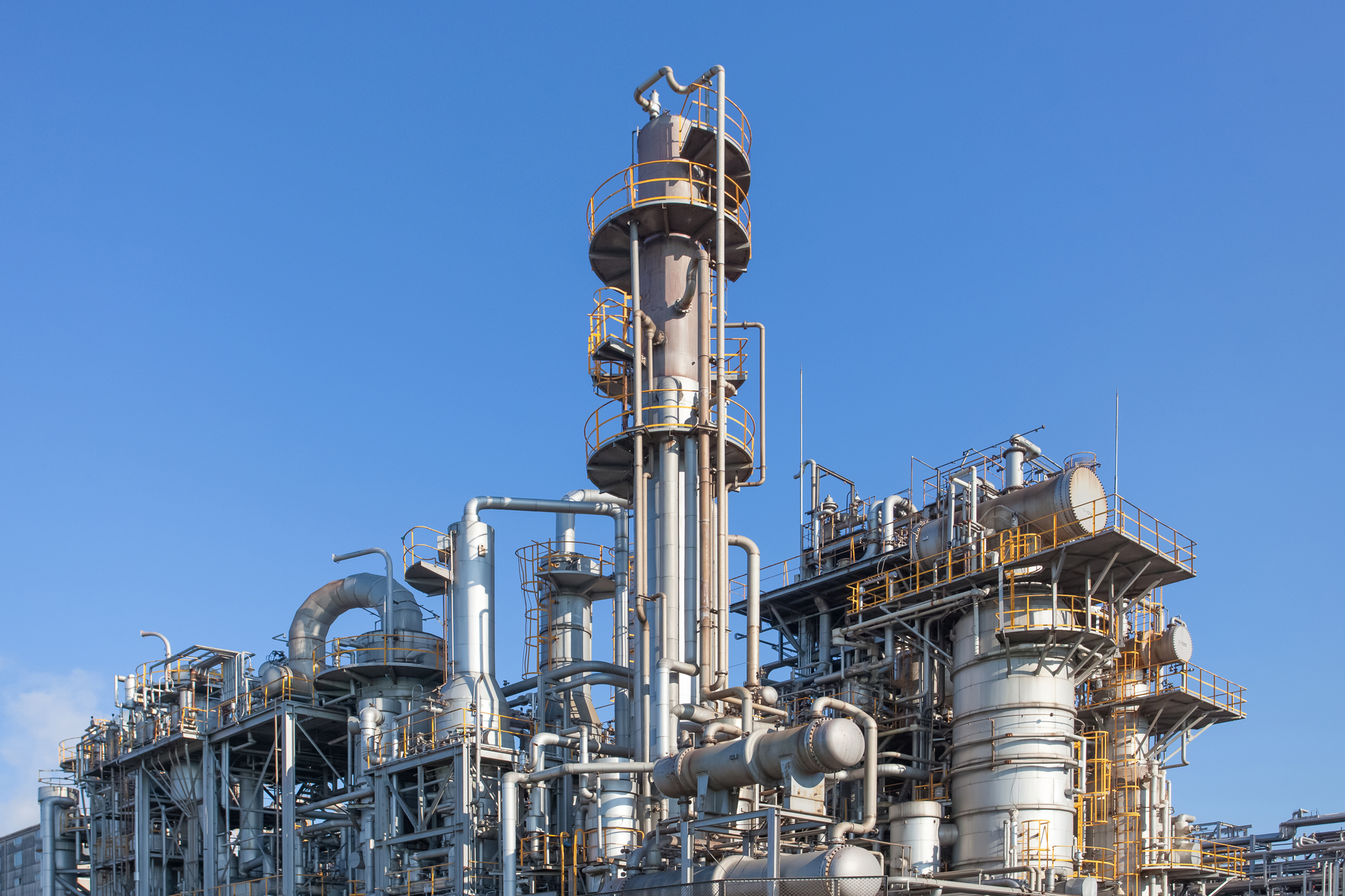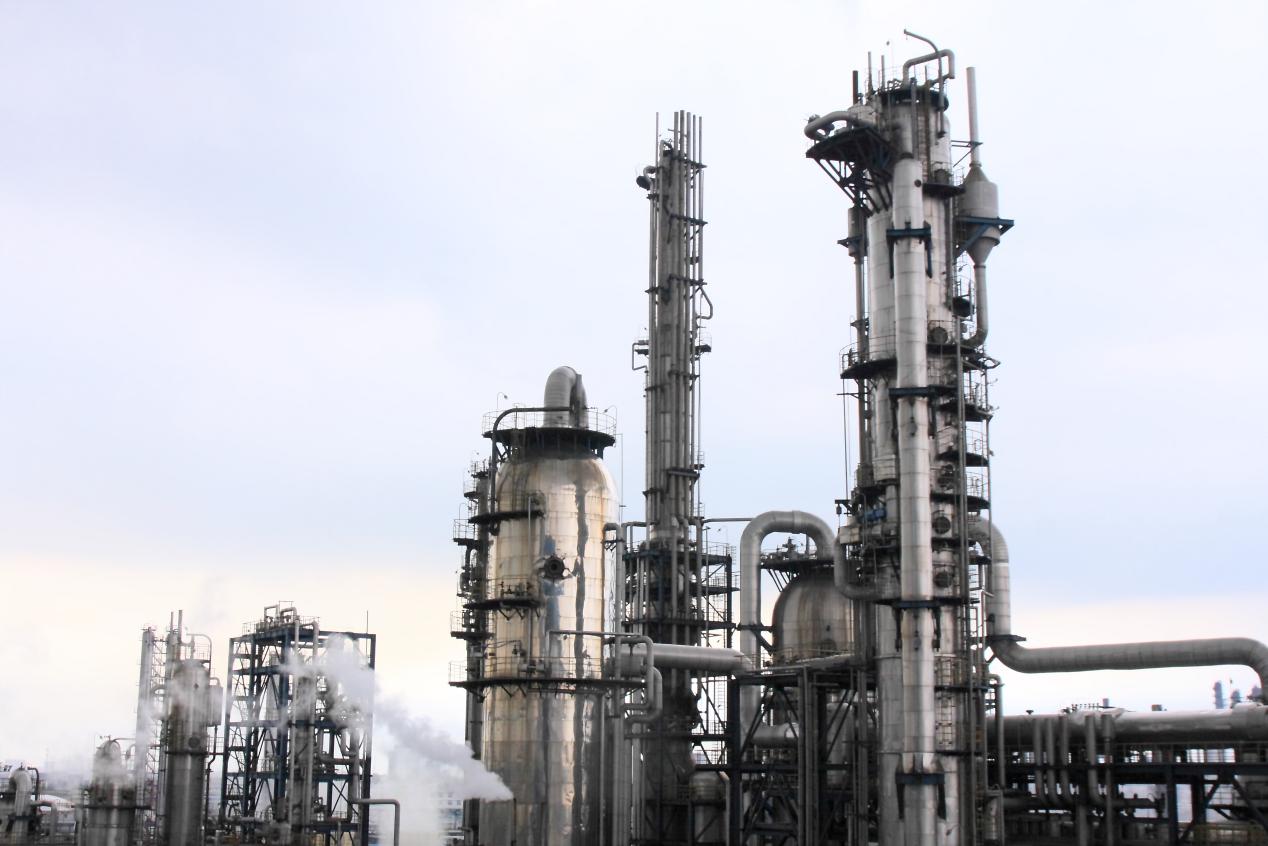The Difference Between Distillation, Stripping, And Extraction Columns
In the process of chemical production, it is often necessary to separate raw materials, intermediate products, or crude products to obtain chemical products or intermediate products that meet the process requirements. Common separation processes in the chemical industry include distillation, absorption, extraction, drying, and crystallization.
1. Distillation
What is the process of distillation?
Distillation is a typical operation for separating liquid mixtures and is the most widely used.
The distillation method of separating the liquid components is heating. Each liquid component has its boiling point and volatility level. Heating gradually raises these substances to their boiling point and converts them to vapor, thereby removing them from the original liquid mixture. Because the liquid mixture will gradually boil, the components with the lowest boiling point are the first and easiest to remove.
For example, water boils at 212 degrees Fahrenheit, while ethanol boils at 173 degrees Fahrenheit. By heating a water-ethanol mixture to 195 degrees Fahrenheit, you can convert the ethanol from a liquid state to vapor and effectively remove it from the mixture.
The distillation process takes place in a column—a device designed to hold the feed, heat it, condense the volatiles, and collect the separated components. In its simplest form, a distillation apparatus has three basic components:
Column: The column is the container that holds the feed, and the feed is introduced into the middle of the container. The vessel is connected to an outlet source that allows the vaporized components (also known as distillate) to pass through. The column also contains several other components, such as trays or packing, which help to further separate the components of the feed to improve purity.
Condenser: The condensation unit is located above the column. It cools the vapor and returns it to the liquid stream, which is collected in a separate container called a return tank. The liquid stream (called reflux) resulting from the vaporized and condensed components is recycled back to the column.
Reboiler: A heat source called a reboiler heats the mixture inside the column to the proper temperature.
The size and diameter of the distillation column, as well as the pressure levels inside the column and the temperature at which the mixture is heated and cooled, will vary depending on the feed itself and the chemistry of the desired product. All of these variables determine how to construct the distillation column for the type of feed being processed. Consequently, distillation columns can become significantly more complex than the simple columns described above.

What is the main function of a distillation column?
A distillation tower is made of rare metals such as titanium, titanium alloy materials, and other materials. It has the characteristics of high strength, high toughness, high-temperature resistance, corrosion resistance, light-specific gravity, etc. Distillation towers are widely used in chemical, petrochemical, metallurgy, light industry, textile, alkali, pharmaceutical, pesticide, electroplating, electronics, and other fields. For example, gasoline, kerosene, diesel, and heavy oil can be obtained by distillation of crude oil; benzene, toluene, and xylene can be obtained by distillation of mixed aromatics; pure liquid oxygen and liquid nitrogen can be obtained by distillation of liquid air.
2. Stripping
What is the stripping process?
Stripping is a physical process, which uses an air medium to destroy the original air-liquid two-phase equilibrium and establish a new air-liquid equilibrium state. Then a certain component in the solution is desorbed due to the reduction of partial pressure, thereby achieving separation of substances. For example, A is a liquid, B is a gas, B is dissolved in A to achieve gas-liquid equilibrium, and the gas phase is dominated by the B gas phase. When the gas-phase stripping medium C is added, the fractions of A and B in the gas phase are reduced, which destroys the gas-liquid balance, and the substances A and B diffuse into the gas phase. However, because the gas phase is dominated by B, a new equilibrium relationship tends to be established, so a large amount of B medium diffuses into the gas phase, thereby achieving the purpose of gas-liquid phase separation. The degree of stripping can be controlled by controlling the amount of stripping medium.
What is the difference between stripping and distillation?
The main difference between stripping and distillation is the method used to separate the feed components. Distillation uses heat to boil volatiles into vapor and then condenses and removes them whereas stripping uses the principle of absorption.
Absorption is a chemical process in which molecules in the bulk phase (liquid or solid) are absorbed into a gaseous substance. When absorption is applied to stripping, engineers use steam as the gas that absorbs the molecules of the liquid. In the stripper, the liquid molecules separated from the feed are absorbed by water vapor.
All contaminant removal columns operate on the same principle: the column design gradually separates the components from the feed to be collected and removed. Although distillation and stripper methods are similar, they differ in several key ways.
Distillation introduces the feed in the middle of the column, while the stripping method introduces the feed at the top of the stripper. Only steam of gaseous boiling water is introduced from the bottom of the stripper. This is called a countercurrent design because the steam and feed are introduced from opposite ends of the column.
As the feed flows down from the top of the column, it flushes porous packing or trays which are designed to increase the contact area where the steam and feed meet. When steam is introduced into the feed, the volatiles with the lowest boiling points will be absorbed into the steam first upon contact with the steam. Higher boiling volatiles does not undergo this process, but if they are less water soluble, they will still be absorbed by the steam and removed with it.
Vapors containing absorbed compounds are withdrawn overhead, where they are generally collected, condensed, and purified. However, it is sometimes released directly into the atmosphere if it is safe.
3. Extraction
What is an extraction column?
An extraction column is liquid-liquid mass transfer equipment commonly used in the chemical industry, petroleum refining, environmental protection, and other industrial sectors. Liquid-liquid extraction is a method of mass transfer, which extracts one or several compound components in a mixture solution with another liquid (called a solvent, which is immiscible with the solvent of the mixture solution). , so that it can be separated, enriched, and purified. This process is called the liquid-liquid extraction and solvent extraction process. The equipment used is called an extractor. There are one and multiple extractions, gaps, and continuous extraction processes. The extractor used for continuous multiple extractions is a tower type equipment called an extraction tower. Its internal structure is to use gravity or mechanical action to break a liquid into droplets, which are dispersed in another continuous liquid for liquid-liquid extraction.
Extraction is applied to the separation of azeotropic mixtures, heat-sensitive products, or mixtures with very high or very low boiling points, where the target substance contained in the carrier substance is low and the distillation is very complex.
How does a liquid-liquid extraction column work?
Extraction methods use columns as with other forms of separation, also known as non-stirred extraction. However, there are other forms of extraction, including mixer-settler and centrifugal extraction, which are considered agitation extraction methods.
There are several different designs of column extraction, but they all work on the same principle. In an extraction column, the column contains the feed, the solvent is added, and components are separated as soluble molecules enter the solvent. Because the remaining feed is a heavier liquid, it will flow down to the bottom of the column. The solvent is the lighter liquid that floats on top of the column with the collected solubles.
The column allows for the separation of the soluble solvent-containing layer from the feed layer, wherein the top solvent layer can be extracted from the desired residual liquid. The extraction column has no internal moving parts, but instead contains internal mechanisms for dividing the feed into dispersing stages.




